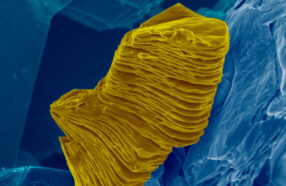
Materials Science
Scientists Say: 2-D Material
Two-dimensional materials such as graphene could improve electronics, carbon capture and more.
Come explore with us!

Two-dimensional materials such as graphene could improve electronics, carbon capture and more.

Scientists made a device that converts the greenhouse gas into formate. This salt can then run a fuel cell to make electricity.

To slow global warming, we’ll need help from CO2-trapping materials. Enter MXenes. They’re strong and reactive — and they love to eat up CO2.

A new coating made from a renewable resource — water-loving nanoparticles made from wood — could keep glass surfaces fog-free.

The salty gel absorbs more water from the air than similar gels, even in desert climates. This could provide clean water for drinking or farming.

The award honors three scientists who discovered and built quantum dots, which are now used in everything from TVs to medical tools.

Rare earth elements aren’t all that rare — but skyrocketing demand for these metals makes them precious.

If made under gentle conditions, leather formed from the “roots” of mushrooms can retain the ability to regrow and repair minor damage.

A prototype fabric could help keep cars, buildings and other spaces cooler during heat waves while also reducing greenhouse-gas emissions.

After being washed, dried, sanitized and shredded, used diapers were mixed with other materials to make a strong concrete.